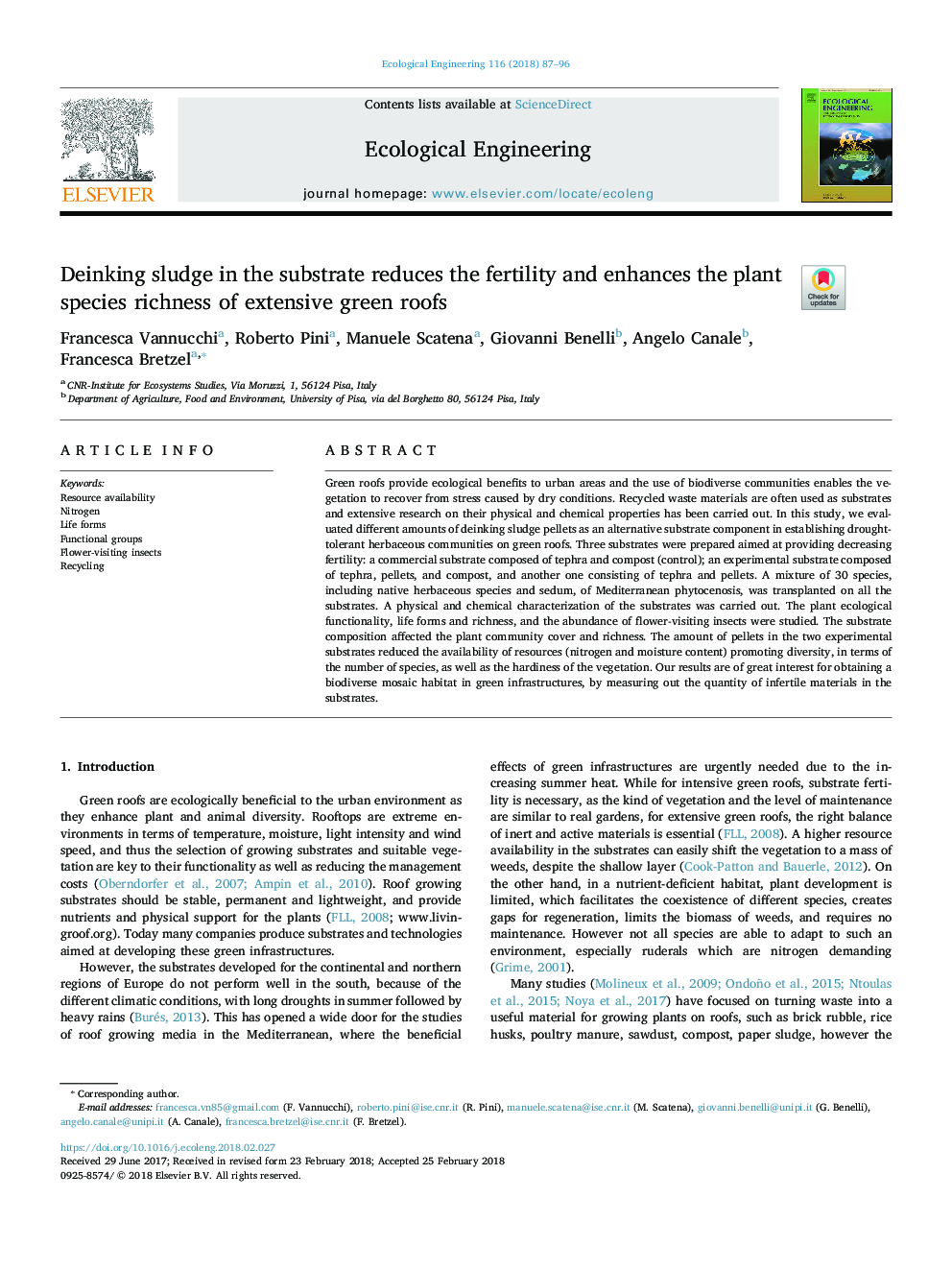| Article ID | Journal | Published Year | Pages | File Type |
|---|---|---|---|---|
| 8847912 | Ecological Engineering | 2018 | 10 Pages |
Abstract
Green roofs provide ecological benefits to urban areas and the use of biodiverse communities enables the vegetation to recover from stress caused by dry conditions. Recycled waste materials are often used as substrates and extensive research on their physical and chemical properties has been carried out. In this study, we evaluated different amounts of deinking sludge pellets as an alternative substrate component in establishing drought-tolerant herbaceous communities on green roofs. Three substrates were prepared aimed at providing decreasing fertility: a commercial substrate composed of tephra and compost (control); an experimental substrate composed of tephra, pellets, and compost, and another one consisting of tephra and pellets. A mixture of 30 species, including native herbaceous species and sedum, of Mediterranean phytocenosis, was transplanted on all the substrates. A physical and chemical characterization of the substrates was carried out. The plant ecological functionality, life forms and richness, and the abundance of flower-visiting insects were studied. The substrate composition affected the plant community cover and richness. The amount of pellets in the two experimental substrates reduced the availability of resources (nitrogen and moisture content) promoting diversity, in terms of the number of species, as well as the hardiness of the vegetation. Our results are of great interest for obtaining a biodiverse mosaic habitat in green infrastructures, by measuring out the quantity of infertile materials in the substrates.
Related Topics
Life Sciences
Agricultural and Biological Sciences
Ecology, Evolution, Behavior and Systematics
Authors
Francesca Vannucchi, Roberto Pini, Manuele Scatena, Giovanni Benelli, Angelo Canale, Francesca Bretzel,
